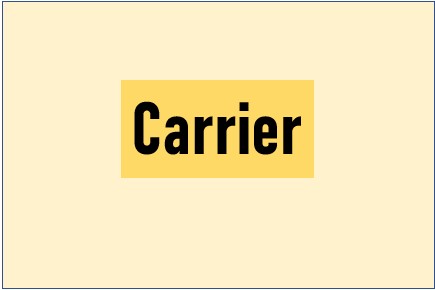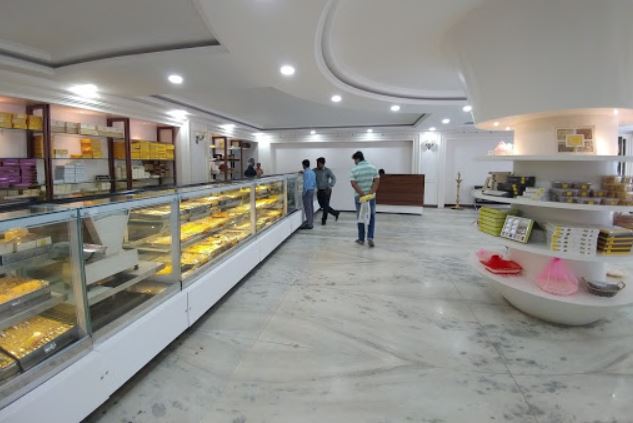There is something unique about great Brands. Carrier is one such.
In my previous post I had mentioned the continuous problem I was facing with my Carrier AC. The problem started with stopping of condensate formation, (not even a drop) which was not attended to by service people a couple of months back.
However, as soon as the issue moved from Service Center (agent) to Carrier Office things started moving. The day Mr. Rao, Carrier Hyderabad, took note of the problem I was asked to connect with Mr. Srinivas (Service) Hyd., and in 24 hrs., the service people visited our place and identified the problem as faulty motor. Mr. Srinivas was informed of the issue and he assured me it will be taken care of. For some reason they came the next day and checked again and identified the problem as faulty PCB.
This was yesterday. Today, being a Saturday, I was doubtful the service people will attend to the problem. Moreover, they had cancelled my complaint saying Customer was not interested. This was strange. I immediately informed Mr. Srinivas.
And, at 4.00 PM the service people came, promptly replaced the faulty PCB.
And, surprisingly, condensate formation started immediately. The temperature set was 17 Deg. C. However, tonight I will set it to 25-26 Deg., and check if the condensate will form overnight. Formation will reduce but will form. I can tell 100% as I have seen that formation happens even at 25 Deg.
As long as the issue was with the Service Center there was confusion and no confidence.
However, as soon as Carrier senior executives stepped in the matter was resolved in 3 days.
Thank you Carrier Hyd.
Okay. Now, let us see understand what my initial complaint was.
Total stoppage of Condensate forming.
Why does it stop suddenly?
- Lack of Humidity:
Very Dry Air: If the air in your home is exceptionally dry, there might not be enough moisture for condensation to occur. This is more likely during winter months when heating systems can dry out the air, but it’s less common in May in Hyderabad.
AC was running fine with condensate from Mar 2024 to Mar 2025.
- The Coils Aren’t Cold Enough:
Low Refrigerant: The refrigerant is what makes the evaporator coils cold. If your AC has a refrigerant leak and the level is low, the coils might not get cold enough to condense moisture.
You might also notice that your AC isn’t cooling as effectively.
Dirty Evaporator Coils: A thick layer of dust and dirt on the evaporator coils can act as insulation, preventing them from effectively cooling the air and causing condensation.
Frozen Evaporator Coils: Restricted airflow (due to a dirty air filter or a blocked vent) or low refrigerant can cause the evaporator coils to get too cold and freeze up. When frozen, they can’t effectively condense moisture. You might notice the AC blowing warm air or shutting off entirely.
Possible.
- Issues with the Condensate Drain System (Indirectly):
Clogged Drain Line: While a clogged drain line wouldn’t directly stop condensation from forming, it would cause the condensate to back up in the drain pan. Most modern AC units have a float switch that detects this backup and shuts off the system to prevent overflows. If your AC has stopped running entirely and you see water in the indoor unit’s drain pan, a clogged drain line could be the culprit.
- The AC Unit Isn’t Running Properly:
- Compressor Issues: If the compressor isn’t working correctly, the entire cooling cycle will be affected, and the coils won’t get cold enough to produce condensate. You’d likely notice a lack of cooling as well.
- Fan Problems: If the blower fan isn’t circulating air properly over the coils, condensation might be reduced or stop.
Both working fine.
What to check:
- Air Filter: Ensure your air filter is clean. A dirty filter restricts airflow and can lead to frozen coils.
- Thermostat Settings: Double-check that your thermostat is set to a cooling mode and a sufficiently low temperature.
- Indoor Vents: Make sure your indoor air vents are open and not blocked by furniture.
- Outdoor Unit: Look at the outdoor unit. Is the fan running? Is there any ice buildup on the copper lines?
A Simple Suggestion to Carrier HYD.
Conduct quarterly orientation programs
- to train technicians on how to diagnose problems
- train technicians on how to conduct themselves with customers
Protect your Brand. Business will always grow.
Post-Free Service AC Maintenance Checklist:
- Bi Annual Deep Cleaning (Crucial): Schedule a thorough cleaning of both the indoor and outdoor units at least once a year, ideally before the cooling season begins (around March/April in Hyderabad). Emphasize a complete coil cleaning to the service technician.
- Condensate Drain Monitoring (Monthly during cooling season): Periodically check the condensate drain line (usually a PVC pipe near the indoor unit) for any drips while the AC is running. If you notice prolonged wetness around the indoor unit or no dripping at all, it could indicate a blockage.
- Listen for Unusual Noises (Regularly): Pay attention to any new or strange sounds coming from your AC unit (indoor or outdoor) when it’s running. Grinding, rattling, hissing, or buzzing sounds could indicate a problem that needs professional attention.
- Check for Cooling Performance (Regularly): Monitor how effectively your AC is cooling your home. If you notice a gradual decline in cooling or longer times to reach the set temperature, it could be a sign of an issue.
- Document Service Dates and Findings: Keep a record of all service dates and any notes on what was done. If you notice a problem shortly after a service, this information can be helpful.
- Ask Questions During Service: Don’t hesitate to ask the technician what they are doing and if they notice any potential issues. A good technician will be happy to explain things in simple terms.
- Always be present when cleaning is going on!






